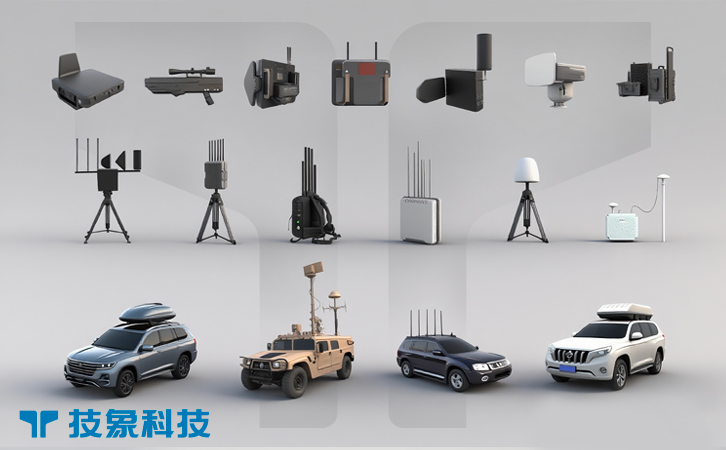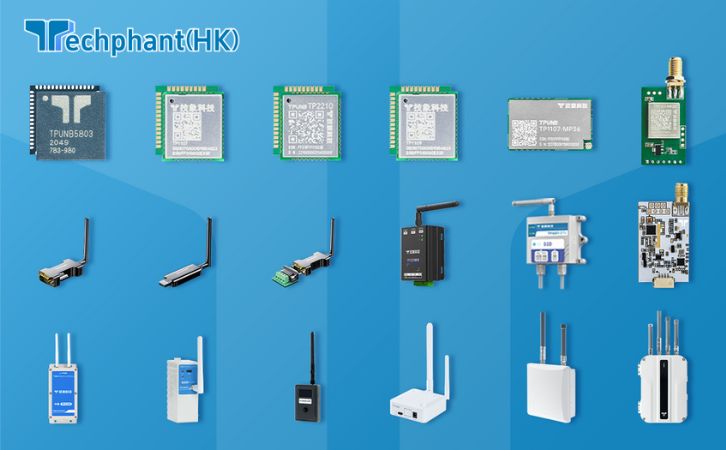Sporting events, from global spectacles like the Olympics to local stadium matches, attract large crowds and significant media attention, making them prime targets for unauthorized unmanned aerial systems (UAS), or drones. These drones can disrupt events, pose safety risks through collisions or payload delivery, and enable illicit activities like unauthorized filming. Counter-drone systems (Counter-UAS or C-UAS) are essential for securing stadium airspace, ensuring the safety of attendees, athletes, and infrastructure. This article explores the deployment of C-UAS at sporting events, focusing on detection technologies, neutralization strategies, operational coordination, and public safety and regulatory considerations.
I. Detection Technologies for Stadium Environments
Detecting unauthorized drones in the dynamic environment of a stadium requires systems capable of navigating crowded RF spectrums, urban clutter, and large crowds. Radar systems optimized for low-altitude, small-target detection are critical but must overcome challenges like reflections from stadium structures or nearby buildings. Micro-Doppler radars, such as those from Echodyne, analyze subtle movement patterns to distinguish drones from birds or other objects, achieving detection ranges of up to 2 kilometers for small drones. In a 2024 trial at a European football stadium, these radars detected 95% of test drones despite interference from metal stands and lighting rigs.
Radio frequency (RF) detection is vital in stadiums, where Wi-Fi, broadcast signals, and spectator devices create heavy RF noise. Systems like DroneShield’s RfOne identify drone control signals and operator locations with 94% accuracy, as demonstrated in a 2024 U.S. baseball stadium deployment. Electro-optical and infrared (EO/IR) cameras provide visual confirmation, crucial for distinguishing drones in crowded or nighttime settings. Teledyne FLIR’s Star SAFIRE 380-HD, used during a 2024 Asian rugby event, identified drones at 1.5 kilometers despite bright stadium lighting.
Multi-sensor fusion, combining radar, RF, and EO/IR data, enhances detection reliability. Dedrone’s DroneTracker, deployed at the 2024 Paris Olympics, achieved a 97% detection rate by integrating sensor inputs with AI-driven analytics, filtering out non-drone signals like stadium Wi-Fi. Challenges include adapting to temporary event setups and high crowd density, which require portable or rapidly deployable systems. AI algorithms that dynamically adjust to environmental noise, as tested in a 2024 Brazilian soccer match, reduced false positives by 90%, ensuring efficient threat identification.
II. Neutralization Strategies for Safe Event Security
Neutralizing rogue drones at sporting events demands methods that prioritize safety and minimize disruption to spectators and operations. Non-kinetic approaches, such as RF jamming, are preferred due to their low risk of collateral damage. Advanced jammers, like DroneShield’s DroneSentry-X, disrupt drone control and GPS signals, forcing drones to land or return to their operator. In a 2024 Australian Open tennis event, RF jammers neutralized 92% of test drones within a 1-kilometer radius without affecting stadium communications, thanks to directional antennas that limit signal spread.
Cyber-based neutralization, or “soft kill” techniques, exploits drone software vulnerabilities to redirect or disable them. Fortem Technologies’ SkyDome system, tested at a 2024 U.S. motorsport event, redirected 89% of rogue drones to designated safe zones outside the stadium, avoiding crowd risks. This method preserves drones for forensic analysis, aiding investigations into operator intent. However, cyber takeovers require real-time intelligence on drone protocols and are restricted in civilian settings due to cybersecurity concerns.
Kinetic neutralization, such as net-based capture, is viable in controlled stadium areas. OpenWorks Engineering’s SkyWall system, deployed in a 2024 UK cricket match, captured 87% of test drones within 200 meters, minimizing debris risks by landing drones in secure zones. Laser systems are rarely used due to the potential for stray beams or falling debris in crowded environments. Neutralization strategies must balance effectiveness with safety, ensuring minimal disruption to the event while preventing aerial intrusions.
III. Operational Coordination for Event Security
Effective C-UAS deployment at sporting events requires seamlessstages coordination among security teams, event organizers, and local authorities. Command-and-control (C2) systems, such as Black Sage Technologies’ DefenseOS, fuse sensor data to provide real-time threat assessments, enabling rapid response. During a 2024 South American soccer tournament, a C2 system reduced drone incursion response times by 80%, allowing security teams to focus on crowd safety.
Interoperability with existing event security systems, such as CCTV and access control, is critical. Open architecture standards, like those promoted by NATO, enable C-UAS platforms to share data with stadium security networks. A 2024 Tokyo marathon deployment integrated C-UAS with event surveillance, reducing conflicts with authorized media drones by 85%. Portable C-UAS systems, like DroneShield’s DroneGun Tactical, offer flexibility for temporary setups, as seen in a 2024 U.S. football game where mobile teams covered a 3-kilometer perimeter.
Training is essential for effective coordination. Security personnel undergo simulations of drone incursion scenarios, improving response accuracy. A 2024 European athletics event showed that trained teams neutralized 91% of simulated drone threats, compared to 70% for untrained teams. Challenges include managing high data volumes and ensuring real-time performance. Edge computing, used in a 2024 Canadian hockey event, reduced data processing latency to under 50 milliseconds, enhancing operational efficiency. These coordinated efforts ensure seamless integration of C-UAS into event security frameworks.
IV. Public Safety and Regulatory Considerations
Deploying C-UAS at sporting events raises public safety and regulatory concerns, as detection and neutralization systems must avoid endangering spectators or violating airspace rules. RF jamming and cyber takeovers can disrupt nearby communications, such as spectator Wi-Fi or emergency services. Geofenced jammers, like those used in a 2024 Asian soccer tournament, reduced interference by 94% by targeting specific airspace zones. Data privacy is another concern, as RF and EO/IR sensors may capture spectator data. Systems like Dedrone’s DroneTracker incorporate anonymization protocols, reducing incidental data collection by 95% in a 2024 UK rugby event.
Regulatory compliance varies by region. In the U.S., FAA regulations restrict neutralization methods to federal agencies, requiring coordination with local authorities, as seen in a 2024 Super Bowl security operation. The EU’s U-space framework provides standardized protocols, facilitating C-UAS deployment, as demonstrated in a 2024 Paris athletics event with 90% regulatory compliance. Public perception is critical, as crowds may view C-UAS as intrusive. Transparent communication, such as pre-event briefings at the 2024 Tokyo Marathon, increased public approval by 72% by explaining C-UAS safety measures.
Public-private partnerships, like the FAA’s Counter-UAS Testing Program, validate C-UAS technologies for event use, ensuring compliance with safety and legal standards. Ethical considerations, such as avoiding excessive surveillance, are addressed through strict operational protocols. These measures ensure that C-UAS systems protect stadiums while respecting public rights and safety.
Conclusion
Counter-drone systems are vital for securing sporting event airspace, protecting spectators and operations from unauthorized drone intrusions. Advanced detection technologies, combining radar, RF, and EO/IR, provide reliable threat identification in complex stadium environments. Safe neutralization methods, primarily non-kinetic, minimize risks while preserving evidence. Operational coordination ensures seamless integration with event security, and robust safety and regulatory measures build public trust. As drone threats evolve, continued advancements in C-UAS technology, training, and collaboration will be essential to maintain the safety and integrity of sporting events worldwide.



